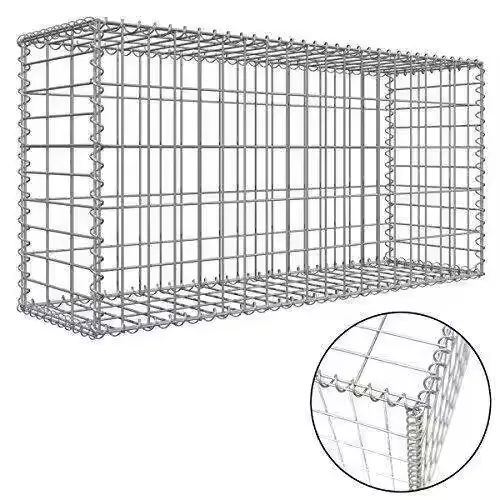-
 Afrikaans
Afrikaans -
 Albanian
Albanian -
 Amharic
Amharic -
 Arabic
Arabic -
 Armenian
Armenian -
 Azerbaijani
Azerbaijani -
 Basque
Basque -
 Belarusian
Belarusian -
 Bengali
Bengali -
 Bosnian
Bosnian -
 Bulgarian
Bulgarian -
 Catalan
Catalan -
 Cebuano
Cebuano -
 China
China -
 Corsican
Corsican -
 Croatian
Croatian -
 Czech
Czech -
 Danish
Danish -
 Dutch
Dutch -
 English
English -
 Esperanto
Esperanto -
 Estonian
Estonian -
 Finnish
Finnish -
 French
French -
 Frisian
Frisian -
 Galician
Galician -
 Georgian
Georgian -
 German
German -
 Greek
Greek -
 Gujarati
Gujarati -
 Haitian Creole
Haitian Creole -
 hausa
hausa -
 hawaiian
hawaiian -
 Hebrew
Hebrew -
 Hindi
Hindi -
 Miao
Miao -
 Hungarian
Hungarian -
 Icelandic
Icelandic -
 igbo
igbo -
 Indonesian
Indonesian -
 irish
irish -
 Italian
Italian -
 Japanese
Japanese -
 Javanese
Javanese -
 Kannada
Kannada -
 kazakh
kazakh -
 Khmer
Khmer -
 Rwandese
Rwandese -
 Korean
Korean -
 Kurdish
Kurdish -
 Kyrgyz
Kyrgyz -
 Lao
Lao -
 Latin
Latin -
 Latvian
Latvian -
 Lithuanian
Lithuanian -
 Luxembourgish
Luxembourgish -
 Macedonian
Macedonian -
 Malgashi
Malgashi -
 Malay
Malay -
 Malayalam
Malayalam -
 Maltese
Maltese -
 Maori
Maori -
 Marathi
Marathi -
 Mongolian
Mongolian -
 Myanmar
Myanmar -
 Nepali
Nepali -
 Norwegian
Norwegian -
 Norwegian
Norwegian -
 Occitan
Occitan -
 Pashto
Pashto -
 Persian
Persian -
 Polish
Polish -
 Portuguese
Portuguese -
 Punjabi
Punjabi -
 Romanian
Romanian -
 Russian
Russian -
 Samoan
Samoan -
 Scottish Gaelic
Scottish Gaelic -
 Serbian
Serbian -
 Sesotho
Sesotho -
 Shona
Shona -
 Sindhi
Sindhi -
 Sinhala
Sinhala -
 Slovak
Slovak -
 Slovenian
Slovenian -
 Somali
Somali -
 Spanish
Spanish -
 Sundanese
Sundanese -
 Swahili
Swahili -
 Swedish
Swedish -
 Tagalog
Tagalog -
 Tajik
Tajik -
 Tamil
Tamil -
 Tatar
Tatar -
 Telugu
Telugu -
 Thai
Thai -
 Turkish
Turkish -
 Turkmen
Turkmen -
 Ukrainian
Ukrainian -
 Urdu
Urdu -
 Uighur
Uighur -
 Uzbek
Uzbek -
 Vietnamese
Vietnamese -
 Welsh
Welsh -
 Bantu
Bantu -
 Yiddish
Yiddish -
 Yoruba
Yoruba -
 Zulu
Zulu
Sustainable Alternatives to Plastic Nets for Eco-Friendly Solutions
The Rise of Plastic Nets A Double-Edged Sword
In the contemporary world, the rise of plastic nets has sparked a conversation that touches upon environmental, economic, and functional dimensions. Used widely across various industries, from agriculture to fishing, these nets have revolutionized how we approach both production and sustainability. However, the implications of their use are complex and merit deeper examination.
Understanding Plastic Nets
Plastic nets, made from materials such as polyethylene and polypropylene, serve multifaceted purposes. In agriculture, they provide crucial support for plants, protect crops from birds, and limit pesticide usage by acting as a physical barrier against pests. Similarly, in the fishing industry, these nets facilitate the capture of fish while ensuring operators' efficiency. Their lightweight, durable, and resistant nature makes them a popular choice for these industry applications.
Environmental Concerns
Despite their utility, plastic nets pose significant environmental challenges. The most alarming issue is plastic pollution. Once discarded, plastic nets can become entangled in marine ecosystems, contributing to a phenomenon known as “ghost fishing.” This occurs when abandoned or lost nets continue to catch marine life, resulting in ecological disruption. According to the United Nations, ghost fishing nets account for nearly 10% of global ocean waste, presenting a direct threat to aquatic biodiversity.
Moreover, the durability of plastic nets, which makes them advantageous for industrial use, also means they persist in the environment for hundreds of years. As they break down into microplastics, these tiny fragments infiltrate the food chain, affecting not just marine life but also human health. Studies have found microplastics in seafood, raising concerns about ingestion and long-term effects on human health.
Economic Impact
plastic nets

The economic benefits of plastic nets are considerable. In agriculture, they enhance productivity by protecting crops and reducing losses caused by pests. Fishermen benefit from improved catches and reduced operational costs thanks to the efficiency of plastic nets. Their affordability and availability mean that farmers and fishermen often resort to these materials over traditional, more sustainable options.
However, the long-term costs associated with their environmental impact may outweigh these benefits. Marine cleanup efforts, loss of biodiversity, and potential economic repercussions from declining fish stocks can lead to a significant financial burden. As regulatory frameworks tighten globally, industries may face increased costs for sustainable practices, creating a need for innovative approaches.
Seeking Solutions
The path forward involves finding a balance between the benefits of plastic nets and their environmental impact. A growing trend is the development of biodegradable alternatives that maintain the functionality of traditional plastic nets while reducing ecological harm. Research is underway to create nets made from natural fibers or bio-based plastics, which break down more readily in the environment.
In addition to innovation, raising awareness is critical. Education campaigns aimed at fishermen and farmers about the importance of proper disposal and management of plastic nets can help mitigate pollution. Implementing deposit-refund systems, similar to those seen in beverage container recycling, could incentivize responsible disposal and recycling of nets.
Conclusion
As we navigate a world increasingly reliant on plastic, the conversation surrounding plastic nets is emblematic of a broader dilemma how to harness the benefits of synthetic materials while addressing their detrimental effects. The rise of plastic nets presents an opportunity to rethink our approach to sustainability in various sectors. By combining technological innovation with responsible practices and education, we can strive toward a more balanced coexistence with our environment. The question remains not if we should use plastic nets, but how we can use them sustainably, considering both current and future realities.
-
Shipping Plastic Bags for Every NeedNewsJul.24,2025
-
Safety Netting: Your Shield in ConstructionNewsJul.24,2025
-
Plastic Mesh Netting for Everyday UseNewsJul.24,2025
-
Nylon Netting for Every UseNewsJul.24,2025
-
Mesh Breeder Box for Fish TanksNewsJul.24,2025
-
Expanded Steel Mesh Offers Durable VersatilityNewsJul.24,2025











